
views
Using Stain Remover
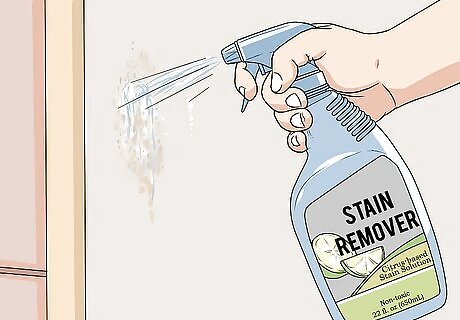
Spray a citrus-based stain solution onto the wall. Take a bottled stain remover and spritz it over the stained area of the wall. Apply as much as needed, or until the sticky tack stain is completely covered. Try to get a product that’s made with a citrus base, as this is most effective when wiping off oil-based marks like sticky tack. Try a Magic Eraser if you don’t have stain remover on hand. Test the cleaning product on your walls before you apply it to the stain. If you have a painted wall, it might wear off some of the paint. Rub a little bit onto a less noticeable part of the wall, like the baseboard, to check.
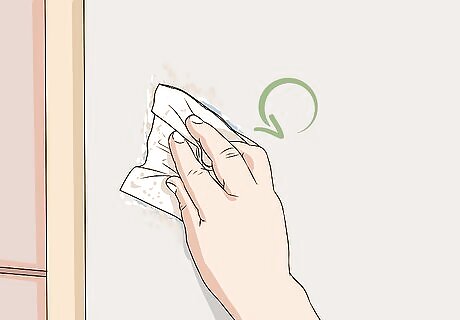
Rub in the solution with a paper towel. Take a rag or paper towel and wipe the stain removal product over the spot. Use small, delicate, circular motions when rubbing the solution in, as you don’t want to damage the wall in the process.

Dry off the wall with a microfiber cloth. Wipe off any excess liquid from the wall using large, sweeping motions. Once you’ve finished wiping, double-check the spot to see if the sticky tack stain is still there. Repeat this process as needed.
Rubbing on Dish Detergent

Pour a pea-sized amount of dishwashing detergent onto a scrub brush. Take a bottle of dishwashing gel and pour a tiny amount on top of a bristled scrubbing brush. This brush can be large or small, as long as you can comfortably rub it over the stained area. You can purchase this at any place that sells cleaning supplies. If you don’t have a cleaning brush on hand, consider using a toothbrush instead. To pack an extra cleaning punch, consider using a dish detergent with a citrus base. EXPERT TIP Eduardo Peralta Eduardo Peralta House Cleaning Specialist Eduardo Peralta is a House Cleaning Specialist and the Manager of Best Maid House Cleaning based in San Jose, California. With over five years of experience, Eduardo and the Best Maid House Cleaning team specialize in home deep-cleaning, post-construction cleaning, and green and eco-friendly cleaning services. Best Maid House Cleaning is fully licensed and insured. Eduardo Peralta Eduardo Peralta House Cleaning Specialist Alternatively, you can use a citrus-based home cleaner to lightly dampen a microfiber towel. Then, scrub the stain in circular motions until it comes off. Pat it dry or let it air dry.

Rub the detergent into the stain using the scrub brush. Create short, circular motions with your brush when you rub the stained area. Depending on the size of the stain, feel free to guide the brush in a larger circle as you scrub. Scrub a smaller, lower part of your wall with the detergent before rubbing it around a larger area. If your wall is painted, you don’t want to accidentally remove any of the paint in the process.
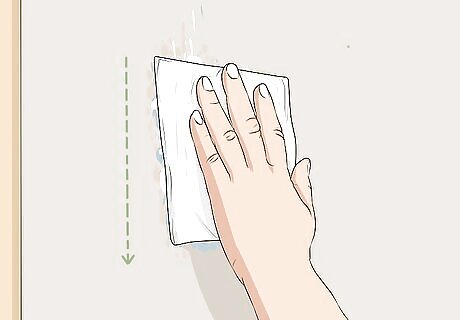
Wipe down any leftover detergent with a damp cloth. Take a slightly moist cloth or paper towel and wipe down any remnants of the detergent. If you let the detergent set, there’s a chance that the wall color could lighten. Make sure you soak up and remove any excess fluid before you leave the area.
Sanding and Repainting the Area
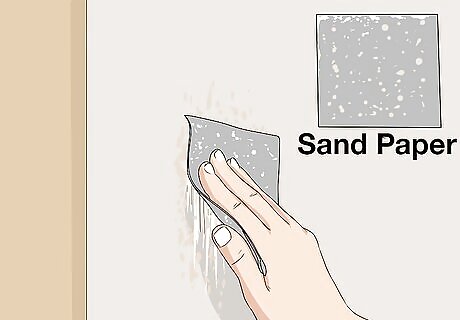
Rub down the spot with fine-grit sandpaper. Wear down the stained area with a square or brick of softer sandpaper. Removing the surface level of the sticky tack stain will make it easier to prime and paint over. If there’s a lot of wall dust left over, wipe it off with a baby wipe or moist paper towel. If your stain is on a higher part of the wall, consider using a sander with an extension to rub it down. Aim for your sandpaper to be 120 grit or higher.
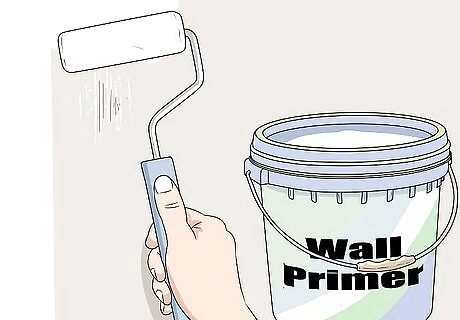
Apply a layer or primer over the stain using a small roller or brush. Take a brush or roller and paint over the stain in short, smooth strokes. Have the primer cover a space wider and taller than the stained spot itself. If you don’t have primer on hand, ask a home improvement or hardware store associate which product would work best on your wall.
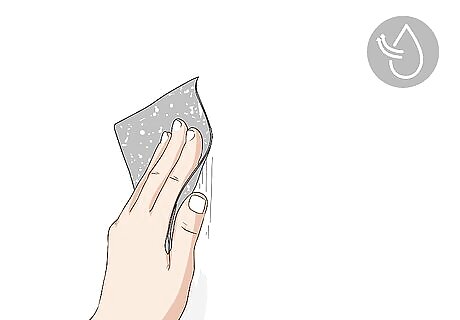
Sand down the primer with fine-grit paper after it dries. Wait for the primer to dry and even out the layer with sandpaper. The primer provides a smoother surface for the paint to go over, so it needs to look as fresh as possible. Wipe down any excess dust with a baby wipe or damp cloth before you continue. If you aren’t sure, check the label on your primer can to see how long it takes the product to dry. Use the same grit sandpaper as you did before.

Add a thin layer of paint over the stained spot with a small brush or roller. Use paint that matches the shade of the wall and brush over the sanded and primed area in long, even strokes. Since this is a touch-up, you don’t need to worry about having any large paint brushes for the job. Certain brushes are better for certain types of paints. If your paint is oil-based, use a brush with natural bristles. If it’s water or latex-based, opt for a synthetic brush. Feel free to use any leftover house paint you have on hand.




















Comments
0 comment